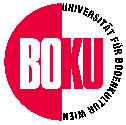|

German Version
Site map
FAIR 3889
Virus diseases
Phytoplasma diseases
Pathogen collection
Pathogen detection
ACLSV
ApMV
ASGV
ASPV
PPV
PDV
PNRSV
ArMV
ToRSV
RpRSV
SLRSV
GFLV
GLRaV-1
GLRaV-3
LChV
CMLV
CRMV
CNRMV
CGRMV
ChTLV
CVA
AP
ESFY
PD
Pathogen elimination
Contact us
Related Sites
|
Detection Methods for ACLSV
Serological Methods
ACLSV can be detected by DAS-ELISA. Antibodies and IgG-conjugate are commercially
vailable from different sources. The IAM currently uses Bioreba and Loewe diagnosis
kits.
Molecular Methods
RT-PCR assay developed by T. Candresse

Nucleic acid extraction
500 mg leaves are ground in 2 ml PBS-tween-PVP-Dieca (PBS 1x, 0.05% Tween 20,
20 mM sodium diethydithiocarbamate, 2 % PVP 25K) and the homogenate cleared by
centifugation for 10 minutes at 13000 g. 20 µl 10 10 % SDS are added to
200 µl of supernatant and incubated 15 minutes at 55° C. SDS is
precipitated by 100 µl of 3 M potassium acetate during 5 minutes on ice.
After centrifugation for 5 minutes at 13000 g, supernatant is mixed with 700 µl
6 M NaI (prepared in 1.87 % Na2SO3) and 10 µl of
autoclaved pH 2 silica at 1.2 g per ml, and kept 10 minutes at room temperature
with intermittant shaking. After one minute centifugation at 5000 g the pellet is
washed twice by resuspension in 0.5 ml washing solution (20 mM Tris pH 7.5,
1 mM EDTA, 100 mM NaCl, 50 % ethanol). Silica pellet is then briefly dried
and nucleic acids eluted by resuspending it in 400 µl of nuclease free
water and incubating 5 minutes at 55° C. Silica is collected by a 2 minutes
centrifugation at 13000 g. 300 µl of the sample are transferred to a
clean tube and stored at -20 °C.
Primers
The reverse transcription primer (A52) has the sequence
5´-CAGACCCTTATTGAAGTCGAA-3´ (position 7213-7233 on ACLSV P863). The
sense, return primer (A53) has the sequence 5´-GGCAACCCTGGAACAGA-3´
(position 6875-6891). The amplified fragment therefore has a size of 358 bp.
RT-PCR-Assay
45 µl of RT-PCR-mix (10 mM Tris.Hcl pH 8.8, 1.5 mM MgCl2, 50 mM
KCl, 0.3 % Triton X100, 250 µM dNTPs, 1 µM of each primer, 0.5 u AMV
reverse transcriptase, 1 u Taq polymerase) are added to each tube containing
5 µl of nucleic acid extract.
The thermal cycling scheme is the following: 15 minutes 42° C (RT reaction),
5 minutes 92° C, followed by 40 cyles of amplification consisting of
20 seconds 92° C, 20 seconds 54° C and 40 seconds 72° C.
The final PCR product of 358 bp is analysed by 1.5 % agarose gel electrophoresis
1 x TBE buffer.
RT-PCR assay developed by J. Kummert

Nucleic acid extraction
Leaf or bark tissueis ground in Extraction bags (Bioreba, Adgen)
with a hand homogenizer in 10 volumes SCPAP buffer (Minsavage
et al, Phytopathology 84, 456-461).
RT PCR reaction
1 µl of clarified crude extract (undiluted and diluted 10x)
is added in 25 µl of RT-PCR reaction mix (Titan One Tube
RT-PCR kit, Roche) containing 0.4 µM of primers ACLSV5F and
ACLSV8R as specified by the manufacturer.
Cycling scheme: RNA transcription 30 min. at 50° C,
denaturation 2 min. at 94° C, DNA amplification 35x
(30 sec. at 94° C, 45 sec. at 55° C, 1 min. at 72° C),
final elongation 10 min. at 72° C.
Analysis of amplification products : electrophoresis in ethidium
bromide stained agarose gel, (colorimetric detection after
hybridization between a phosphorylated capture probe and a biotin
labelled detection probe; kit in development - LAMBDATECH S.A.)
|



